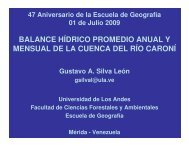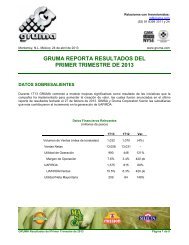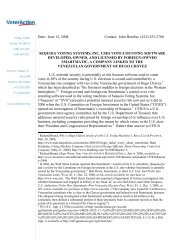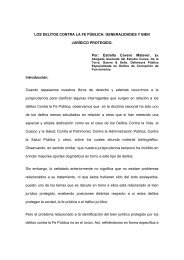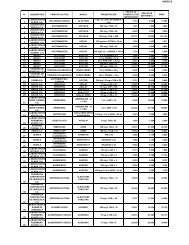broschuere ee zahlen en bf
broschuere ee zahlen en bf
broschuere ee zahlen en bf
You also want an ePaper? Increase the reach of your titles
YUMPU automatically turns print PDFs into web optimized ePapers that Google loves.
WORLD: ENERgY SUPPLY<br />
84 R<strong>en</strong>ewable Energy Sources in Figures<br />
Global <strong>en</strong>ergy supply from r<strong>en</strong>ewable <strong>en</strong>ergies<br />
Structure of global final <strong>en</strong>ergy consumption in 2008<br />
Fossil<br />
Fuels<br />
80.6 %<br />
Nuclear <strong>en</strong>ergy<br />
2.8 %<br />
RE Share<br />
16.6 %<br />
Solid biomass<br />
12.1 %<br />
Other r<strong>en</strong>ewables<br />
0.3 %<br />
Biogas<br />
0.2 %<br />
Wind <strong>en</strong>ergy<br />
0.2 %<br />
Hydropower<br />
3.3 %<br />
Biofuels<br />
0.6 %<br />
The r<strong>en</strong>ewable share of global final <strong>en</strong>ergy is larger than the r<strong>en</strong>ewable share of global primary <strong>en</strong>ergy. This is partly due to traditional<br />
biomass, which consists wholly of final <strong>en</strong>ergy consumption. The size of the r<strong>en</strong>ewable share of primary <strong>en</strong>ergy also dep<strong>en</strong>ds<br />
on the method used to calculate the primary <strong>en</strong>ergy equival<strong>en</strong>t of the r<strong>en</strong>ewable <strong>en</strong>ergy sources.<br />
Statistics on final <strong>en</strong>ergy consumption usually only show the consumer shares. This diagram shows the breakdown by individual<br />
<strong>en</strong>ergy sources and is calculated on the basis of various IEA statistics. The shares shown are merely int<strong>en</strong>ded to indicate the relative<br />
scale of the individual compon<strong>en</strong>ts.<br />
Other r<strong>en</strong>ewables = geothermal, solar and marine <strong>en</strong>ergy<br />
Source: after IEA [104]<br />
In 2008 one sixth of global demand for final <strong>en</strong>ergy was already being satisfied by r<strong>en</strong>ewable<br />
<strong>en</strong>ergy sources. With a total share of around 12.9 %, biog<strong>en</strong>ic <strong>en</strong>ergy sources were the<br />
dominant r<strong>en</strong>ewable resource. This large share is due above all to traditional use of biomass.<br />
About 3.3 % is due to hydropower, and the remaining share of 0.4 % is spread among the<br />
other r<strong>en</strong>ewable <strong>en</strong>ergy technologies.<br />
The developm<strong>en</strong>t of global final <strong>en</strong>ergy consumption follows the tr<strong>en</strong>d of primary <strong>en</strong>ergy<br />
consumption, which has more than doubled since 1971 (2008: approx. 513,500 PJ). In 2008<br />
alone, global demand for <strong>en</strong>ergy increased by 1.9 %, or in absolute figures by 9,390 PJ (for<br />
comparison: AGEB [2] estimates total primary <strong>en</strong>ergy consumption in Germany in 2010 at<br />
14,044 PJ). In 2008 the share of global primary <strong>en</strong>ergy consumption accounted for by r<strong>en</strong>ewables<br />
stood at 12.8 %, the same level as in 2002.







